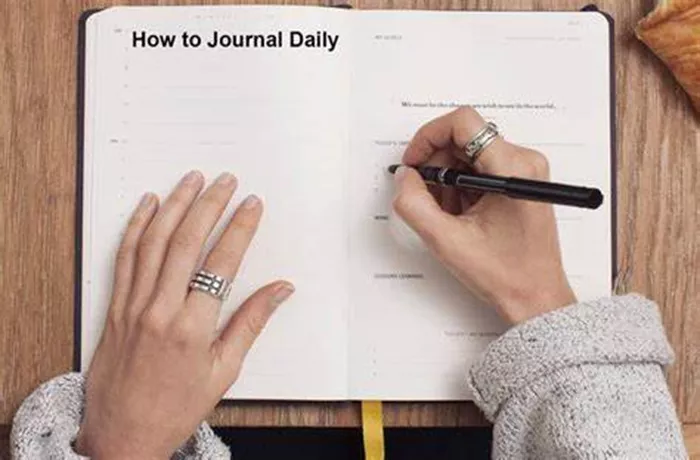Anxiety is a common mental health issue that affects millions of people worldwide. While there are numerous methods to manage anxiety, journaling has emerged as a powerful tool for many. Journaling offers a safe space to express thoughts, track patterns, and develop coping strategies. This article explores how to journal daily for anxiety, providing practical tips, techniques, and insights to help you get started and maintain a consistent journaling practice.
Understanding Anxiety and Its Impact
What is Anxiety?
Anxiety is a natural response to stress characterized by feelings of worry, nervousness, or fear. While it is normal to experience anxiety occasionally, chronic anxiety can interfere with daily life, impacting mental and physical health. Common anxiety disorders include generalized anxiety disorder (GAD), social anxiety disorder, panic disorder, and specific phobias.
How Anxiety Affects the Mind and Body
Anxiety triggers the body’s fight-or-flight response, leading to symptoms such as increased heart rate, sweating, trembling, and difficulty concentrating. Over time, chronic anxiety can contribute to health problems like insomnia, digestive issues, and weakened immune function. Mentally, anxiety can lead to persistent worry, negative thinking patterns, and avoidance behaviors.
Benefits of Journaling for Anxiety
Journaling helps manage anxiety by providing an outlet for expressing emotions, identifying triggers, and developing coping mechanisms. Research has shown that journaling can reduce symptoms of anxiety, improve mood, and enhance overall mental well-being. By regularly writing down thoughts and feelings, individuals can gain a clearer understanding of their anxiety and work towards managing it more effectively.
Getting Started with Journaling
Choosing Your Journaling Tools
To start journaling, select tools that suit your preferences. This could be a traditional notebook and pen, a digital journal app, or a combination of both. The key is to choose a medium that you find comfortable and accessible, ensuring you can journal consistently.
Creating a Comfortable Space
Set up a quiet, comfortable space for journaling. This could be a cozy corner in your home, a park bench, or a favorite coffee shop. The environment should be free from distractions, allowing you to focus on your thoughts and feelings.
Setting a Regular Schedule
Consistency is crucial for effective journaling. Set aside a specific time each day to write, whether it’s in the morning to set the tone for the day, during lunch breaks, or in the evening to reflect on the day’s events. Establishing a routine helps make journaling a habit.
Techniques for Effective Journaling
Free Writing
Free writing involves writing continuously for a set period without worrying about grammar, punctuation, or spelling. The goal is to let your thoughts flow freely onto the page, helping you explore your emotions and gain insights into your anxiety.
How to Practice Free Writing
Set a Timer: Choose a time limit, such as 10-20 minutes.
Write Without Stopping: Keep writing without pausing to think or edit.
Reflect: After the timer goes off, read what you’ve written and highlight any recurring themes or insights.
Structured Journaling
Structured journaling uses prompts or specific formats to guide your writing. This method can be particularly helpful if you find free writing overwhelming or if you prefer more direction in your journaling practice.
Common Structured Journaling Techniques
Gratitude Journaling: Write down three things you are grateful for each day. Focusing on positive aspects of your life can help shift your mindset and reduce anxiety.
Mood Tracking: Note your mood at different times of the day and any events or thoughts that influenced it. Over time, this can help you identify patterns and triggers.
Thought Records: Use a structured format to record anxious thoughts, the situations that triggered them, and alternative, more balanced thoughts. This cognitive-behavioral technique helps challenge negative thinking patterns.
Reflective Journaling
Reflective journaling involves looking back on past entries to gain insights and track progress. This technique helps you understand how your thoughts and feelings evolve over time and can reinforce positive changes.
Steps for Reflective Journaling
Review Past Entries: Regularly read through previous journal entries.
Identify Patterns: Look for recurring themes, triggers, and coping strategies.
Set Goals: Based on your reflections, set specific goals for managing your anxiety.
Visualization and Affirmation
Visualization and affirmation journaling involve using positive imagery and affirmations to counteract negative thoughts and reduce anxiety. This method helps cultivate a more positive outlook and reinforces self-belief.
How to Incorporate Visualization and Affirmation
Visualize Positive Outcomes: Write about a situation that causes anxiety and visualize a positive outcome.
Create Affirmations: Write positive statements about yourself and your ability to cope with anxiety. Repeat these affirmations daily.
Overcoming Common Challenges
Dealing with Writer’s Block
It’s common to feel stuck when journaling. To overcome writer’s block, try using prompts, changing your environment, or starting with a simple description of your day. Remember, there is no right or wrong way to journal—focus on getting your thoughts down without judgment.
Maintaining Consistency
Staying consistent can be challenging, especially during busy or stressful times. To maintain consistency, set realistic goals, such as journaling for five minutes a day, and gradually increase the time as it becomes a habit. Use reminders or habit-tracking apps to keep yourself accountable.
Addressing Emotional Overwhelm
Journaling about anxiety can sometimes bring up intense emotions. If you feel overwhelmed, take a break and engage in calming activities, such as deep breathing, meditation, or talking to a trusted friend. Remember that it’s okay to step away and return to journaling when you feel ready.
Enhancing Your Journaling Practice
Combining Journaling with Other Therapies
Journaling can be a valuable complement to other therapeutic approaches, such as cognitive-behavioral therapy (CBT), mindfulness, or medication. Discuss your journaling practice with your therapist or healthcare provider to ensure it aligns with your overall treatment plan.
Using Technology
Digital tools can enhance your journaling practice. Apps like Day One, Penzu, and Journey offer features such as password protection, mood tracking, and the ability to add photos and voice recordings. These features can make journaling more interactive and secure.
Exploring Creative Journaling
Incorporate creative elements into your journaling to make it more engaging. Try using art, poetry, or collage to express your thoughts and feelings. Creative journaling can provide a different perspective on your anxiety and make the process more enjoyable.
Real-Life Success Stories
Case Study 1: Managing Social Anxiety
Emily, a 28-year-old graphic designer, struggled with social anxiety. She began journaling daily, using a combination of free writing and thought records. Over time, Emily noticed patterns in her anxiety, such as specific triggers during social interactions. By addressing these triggers through journaling and working with her therapist, Emily developed coping strategies and gradually became more comfortable in social situations.
Case Study 2: Overcoming Panic Attacks
John, a 35-year-old teacher, experienced frequent panic attacks. He started a structured journaling practice, focusing on mood tracking and affirmations. By identifying the early signs of panic and writing about them, John learned to intervene with relaxation techniques before the panic escalated. His journaling practice, combined with breathing exercises and regular therapy, significantly reduced the frequency and intensity of his panic attacks.
Case Study 3: Reducing Generalized Anxiety
Sarah, a 40-year-old marketing manager, dealt with generalized anxiety disorder. She used gratitude journaling and visualization techniques to shift her focus from worry to positive outcomes. Writing daily about what she was grateful for helped Sarah cultivate a more positive mindset, reducing her overall anxiety levels. Reflecting on her progress through journaling, Sarah gained confidence in her ability to manage her anxiety.
Conclusion
Journaling is a powerful tool for managing anxiety, offering a safe space to express emotions, identify triggers, and develop coping strategies. By choosing the right tools, setting a regular schedule, and using effective journaling techniques, you can harness the benefits of this practice to improve your mental well-being. Overcoming challenges like writer’s block and emotional overwhelm is part of the journey, and combining journaling with other therapies can enhance its effectiveness. Real-life success stories illustrate the transformative potential of journaling for anxiety, providing inspiration and motivation to start your own practice.
Embrace journaling as a personal and flexible approach to managing anxiety, allowing it to evolve with your needs and experiences. Whether through free writing, structured techniques, or creative expression, journaling can become a valuable part of your mental health toolkit, helping you navigate the complexities of anxiety and find greater peace and clarity in your daily life.
[inline_related_posts title=”You Might Be Interested In” title_align=”left” style=”list” number=”6″ align=”none” ids=”9050,9040,9031″ by=”categories” orderby=”rand” order=”DESC” hide_thumb=”no” thumb_right=”no” views=”no” date=”yes” grid_columns=”2″ post_type=”” tax=””]

































